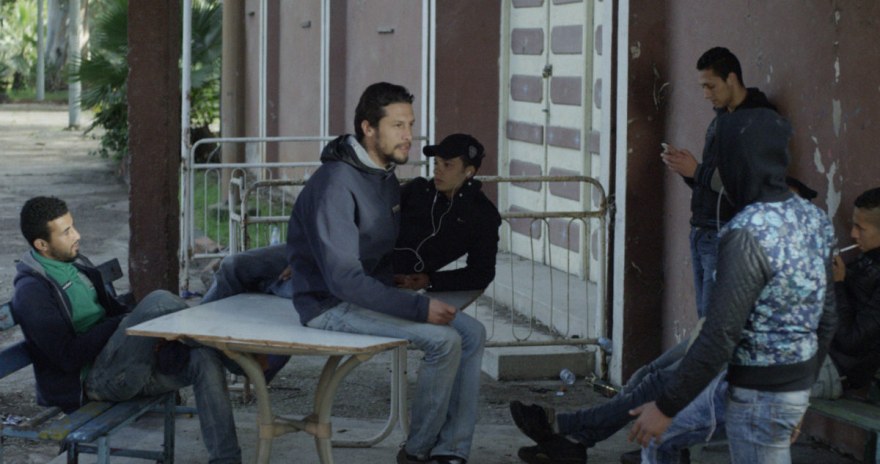Tea time with Le Park
Interview with Randa Maroufi, director of The Park
Your film shows the controversies around the usage of social networks in Morocco, and in particular the Tcharmil Affair, where young people on Facebook groups show off weapons right alongside the latest trends in clothing. What interested you about this phenomenon?
It was not the phenomenon as such that interested me, but more what was going on around it. There is a whole set of violent imagery that gets shared on social networks. For a while now, I have been collecting any images that strike me. It could be absurd, banal, violent, an image which has gotten some buzz, or which made me laugh, or disgusted me, annoyed me… The objective was to someday use (or not use) them for an art project.
My goal was not to work with news footage, but to take images of contemporary life, playing off a feeling of deja vu and mixing politics with entertainment. There is a form of dissent in these collected images and also a kind of giving in. It’s a way of thinking about our society, with its ridiculous aspects and its weak points. It’s also seeing our daily life through a mise en scene with a stage, actors, an audience…
Why set your story in a park in Casablanca?
Through this film, I evoke the city with its urban and social aspects. To describe a city is also to describe a political system.
Reenacting these absurd situations in a dilapidated park was a choice to create a space that runs parallel to the internet. This same internet allows for their existence and archives it. The internet becomes a public space in relation to the space of this park.
We discover the park through long sequence shots which reveal what’s happening behind these controversial photos. Is this a way of taking some perspective, and giving distance to these photos that have so often been taken at face value?
Taking the time to film around each image, I attempt to transform and question points of view in order to expand the realm of possibilities.
Was your film also meant to speak to this affair of Nador’s kiss?
When I was writing the film, one tableau was going to be Nador’s kiss, but I decided not to do it. Instead, I sought just one type of image: the selfies with swords and other similar images of what the young people at Yasmina park live through on a daily basis. I had to rewrite when I visited the place and met these young people.
The soundtrack mixes news from the radio, spoken word, and interviews. Why this mix?
I knew from the beginning that I did not want to record live sound. I felt that the images could be seen as too aesthetic, and I needed some sounds to roughen up the images. They could also give some useful information to the audience to clarify the subject.
For starters, I put a mix of interviews I conducted with the youths before the beginning of the shoot. I added some press clips about the phenomenon, some sounds of fights taken from Youtube, a blanket of offbeat sounds meant to heighten tension during the sequence shots, and my own voice during the location scouts and rehearsals… All this material that was collected during the research of this project was included in the final soundtrack of the film.
How did you meet the different actors of the film?
Yasmina Park is closed to the public. I was told not to enter because it is dangerous. But wanting to face my own fear, I decided to jump over the fence, and that’s where I met my « casting director », a young guy who has been hanging out in the park for many years. He knows every inch of the place. I befriended him and explained my project to him and asked him to introduce me to people. The casting took place gradually as he slowly introduced me to friends who frequent the park. After about three weeks, I had a selection of some 40 people to choose from.
.
The Park was screened in competition in the Labo section L5.








